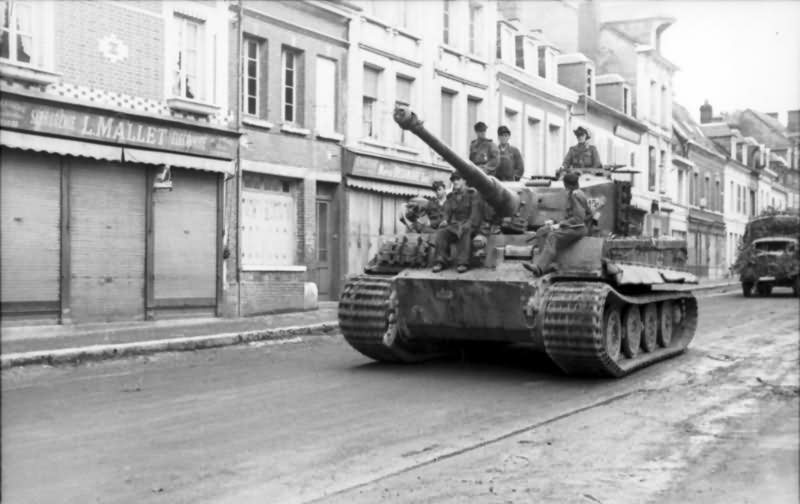The Tiger I tank was renowned for its formidable armor protection, making it a difficult target for Allied tanks. The hull front was protected by 100mm of armor, while the turret front had even thicker armor at 120mm. This level of protection made the Tiger highly resistant to most Allied tank and anti-tank guns, except for a few like the British 17-pounder and the late-war American 90mm gun.
The Tiger’s armor was not uniform throughout the tank, but even its side and rear armor were substantial at 80mm, giving it an advantage over other German tanks like the Panther. The Panther was well-protected from the front but had thinner, more vulnerable side armor. In contrast, the Tiger’s thicker side and rear armor made it more resilient to flank shots.
The lower hull had 60mm of armor, but it was further protected by the tank’s multiple layers of steel road wheels, which provided additional shielding from shells or shrapnel striking low. The engine deck and turret roof, however, were relatively thin at only 25mm, making the Tiger vulnerable to air attacks and artillery shells. In response to these threats, the turret roof armor was increased to 40mm from March 1944 onward.
The Tiger’s armor was assembled using interlocked joints and high-quality welding, maximizing its structural integrity and even making the vehicle waterproof for crossing rivers. Despite the tank’s impressive armor thickness, it lacked the advantage of sloped armor, which would have increased the effective protection by potentially deflecting incoming rounds. The Tiger’s armor plates were nearly vertical, with the front plate sloping back at only 81°. If the Tiger had incorporated sloped armor, it could have either improved protection or allowed for the same level of defense with thinner, lighter plates, reducing the tank’s weight.
Interestingly, sloped armor was not uncommon in German designs of the time, as the slightly newer PzKpfw V Panther used sloped armor extensively. However, the PzKpfw III and PzKpfw IV, which predated the Tiger, also featured vertical plates. Unlike those older tanks, the Tiger’s welded construction would have made it easier to implement sloped armor compared to the bolted armor of earlier designs, but this change was not adopted.
A significant vulnerability of the Tiger was the way its ammunition was stored. The rounds were kept in large, unarmored bins on either side of the hull, meaning that if an enemy shell managed to penetrate the thick side armor, it could ignite the ammunition, causing a catastrophic fire. The engine compartment was also a fire hazard because it was sealed for submersion in water. This sealing could cause leaking fuel to pool at the bottom of the tank, increasing the risk of fire. To mitigate this, the Tiger was equipped with an automatic fire-extinguishing system in the engine compartment.
Despite these risks, the Tiger’s armor made it nearly impervious to all but the most powerful Allied tank guns. Only the British 17-pounder and the late-war American 90mm gun could reliably penetrate the Tiger’s armor at effective combat ranges, giving the Tiger a significant battlefield advantage during much of the war.
